A Guide to Gum Free Binders in Gluten Free & Vegan Baking

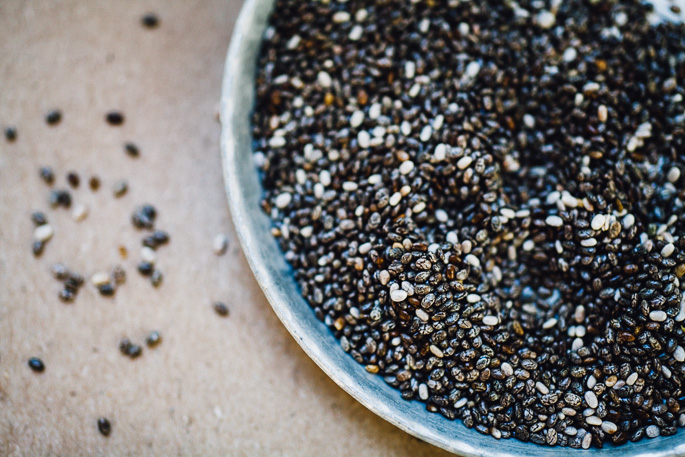

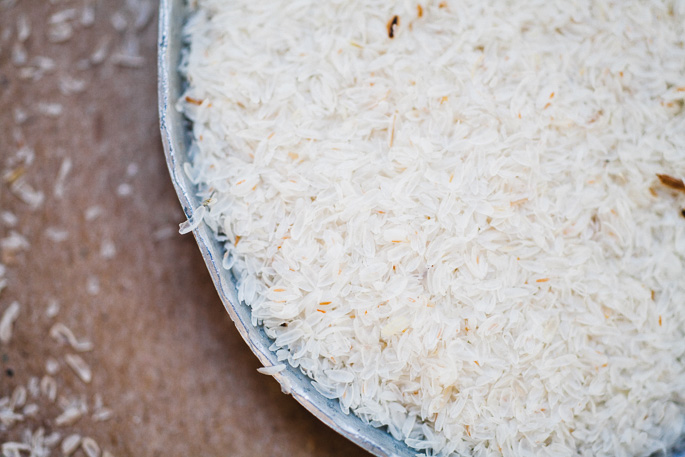
 To those of you who made last weeks cinnamon rolls, I hope you loved them! To those of you who were stoked but then bummed when you saw psyllium in the list of ingredients, it's time to share some knowledge.
To those of you who made last weeks cinnamon rolls, I hope you loved them! To those of you who were stoked but then bummed when you saw psyllium in the list of ingredients, it's time to share some knowledge.
All About Gums & Why You Should Avoid Them
I don't use industrial food additives in my recipes. That is: xanthan gum. Xanthan gum has become incredibly popular in the gluten free baking world. And for good reason. A small amount gives gluten-free baked goods gluten-like properties: stretch and pliability. And it acts as a binder, holding the various ingredients together so that the final product doesn't fall apart into a pile of crumbly sadness.
I started my gluten-free baking journey using xanthan gum in everything. I've baked countless treats with a lovely pull-apart quality thanks to its freaky powers. I started noticing that most of the processed gluten free foods I was eating contained it. And then I learned what it actually is.
I couldn't even begin to explain the process that it takes to produce xanthan gum. Let's just say it starts as a polysaccharide secretion from a slimy black bacteria originally discovered on deteriorating broccoli. And then it goes through a complex chemical process that can't be repeated in your home kitchen. You can read all about that process here.
So that's one thing, the nature of this industrial foodstuff. But the worst part is what it does in your body. Xanthan gum is a sticky, binding, thickening agent. It creates a slippery environment in your gut and kills important, healthy bacteria in the digestive tract. Which leaves room for unwanted bacteria to move in. Scientists consider it the leading cause of Inflammatory Bowel Disease (IBD) and Irritable Bowl Syndrome (IBS). It contributes to and may directly cause Ulcerative Colitis among other auto-immune diseases. Not to mention that gums slow down the metabolism, which leads to weight gain.
A note on guar gum, which I also avoid: guar gum, although less highly processed than xanthan gum, has been linked to the same diseases and health issues. It creates a similarly toxic condition in the digestive tract and should be avoided and/or eliminated from your diet.
This is not to say that if you occasionally consume small amounts of xanthan or guar gum you'll keel over on the spot. Occasionally consuming such things may or may not be problematic for your individual constitution. And avoiding them entirely is becoming more and more difficult, especially when it comes to commercial gluten free foods. Simply do your best to eat xanthan- and guar gum-free foods on a daily basis.
A Guide to Natural Gum Free Binders in Gluten Free & Vegan Baking
So what do we use for binders in gluten free and vegan baking without these super-powered, health-deteriorating food additives? Thankfully, there are natural alternatives: chia, flax, and psyllium.
But what are these ingredients? Why should you use them? How do they work? Grab a cup of coffee or tea and let's settle in to some LEARNING!!!!
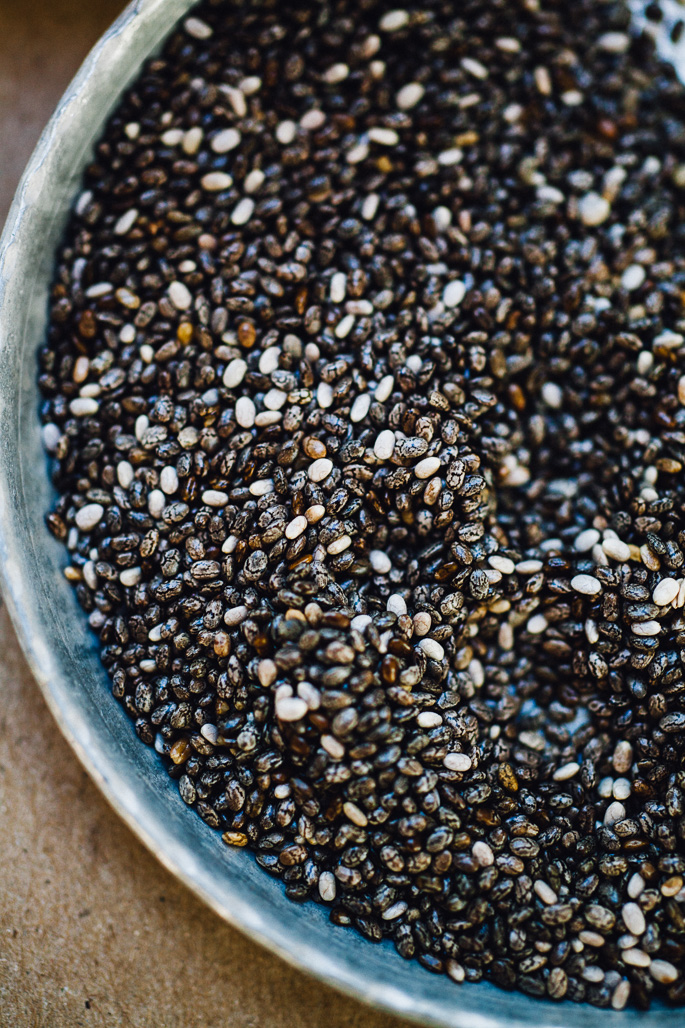 Chia is the seed of the chia plant, Salvia hispanica. "Black" chia ranges in color from black, white, ash grey, and brown. Chia is a traditional food consumed in Central America as a nutritional supplement and daily food. It was grown as an agricultural product in the pre-Columbian Aztec empire. Chia is a good source of protein, Omega-3 Fatty Acids, B vitamins (thiamin, niacin, riboflavin and folate), and minerals (zinc, phosphorous, calcium, iron, magnesium, manganese).
Chia is the seed of the chia plant, Salvia hispanica. "Black" chia ranges in color from black, white, ash grey, and brown. Chia is a traditional food consumed in Central America as a nutritional supplement and daily food. It was grown as an agricultural product in the pre-Columbian Aztec empire. Chia is a good source of protein, Omega-3 Fatty Acids, B vitamins (thiamin, niacin, riboflavin and folate), and minerals (zinc, phosphorous, calcium, iron, magnesium, manganese).
Chia is the most versatile of gum-free binders in that it's relatively tasteless and can be added to almost anything for an extra kick of nutrition. I use it in smoothies, sprinkle it over toast, add it to salads, and I mix it into just about every dessert I make. Chia can also help keep you hydrated. The hydrophilic (water-loving) nature of chia regulates the body's absorption of body fluids, electrolytes, and nutrients. Add a tablespoon or two to a liter of water and sip throughout the day.
When soaked in water, chia becomes gelatinous. A mucilaginous coating forms around the central seed. This natural gel-forming property makes chia an excellent egg-replacer and binder in baked goods.
Chia's baking super powers: moisture, mild pliability, and moderately stable structure. Baked goods made with chia tend to stay moist longer. Resulting baked goods have good flexibility and a soft crumb. It's the best true egg-substitute of these three binders.
Make a "chia egg" by combining 1 tablespoon whole or ground chia with 3 tablespoons water. Stir together and set aside for 10-15 minutes until the mix is thick and gelatinous. Use to replace eggs as a binder in baked goods in a 1:1 ratio.
I like to buy chia seeds in bulk because they have a long shelf-life. Chia is commercially available at most national U.S. grocery chains and via Amazon. I like Spectrum Essentials Chia Seeds


 Flax is the seed of the flax plant, Linum usitatissimum. It's cultivated for both fiber (linen) and food. Flax was first cultivated for its oils 9,000 years ago in Syria. Flax seeds have a mild, nutty taste. Flax is a good source of dietary fiber, protein, Omega-3's, B vitamins (thiamin), and some essential minerals (magnesium and phosphorous).
Flax is the seed of the flax plant, Linum usitatissimum. It's cultivated for both fiber (linen) and food. Flax was first cultivated for its oils 9,000 years ago in Syria. Flax seeds have a mild, nutty taste. Flax is a good source of dietary fiber, protein, Omega-3's, B vitamins (thiamin), and some essential minerals (magnesium and phosphorous).
Flax also becomes sticky and gelatinous when combined with liquid. To use flax as a binder in baked goods, grind whole flax into a fine, powdery meal in a spice grinder, coffee grinder, or high powered blender with a milling blade. The more you mill at one time, the easier it is to grind the flax finely.
Flax's baking super powers: moisture, a middle nutty flavor, and moderate binding strength. Flax is the least potent of the natural binders. Alone, it's most effective when your recipe doesn't require a lot of structure or free-form shaping. It's best used in cakes, brownies, bars, and the like. For recipes that need a heftier structure and pliability, flax works best when combined with other binders like chia and psyllium.
Make a "flax egg" by combining 1 tablespoon ground flax with 3 tablespoons water. Stir together and set aside for 10-15 minutes until the mix is thick and gelatinous. Use to replace eggs as a binder in baked goods in a 1:1 ratio.
You can buy flax seed at most U.S. groceries. The oils in whole flax are relatively stable at room temperature. So to save money I buy in bulk. Avoid buying pre-ground flax seed meal stored at room temperature. The oils in pre-ground flax seed are highly unstable and go rancid quickly. Milled flax has a much shorter shelf life than whole flax, as little as one week. I suggest milling your flax seed at home in small batches. Store freshly milled flax in an air-tight container in the fridge for up to 1 month. This will preserve the integrity of the natural oils in the flax. My preference is Bob's Red Mill Golden Flaxseed
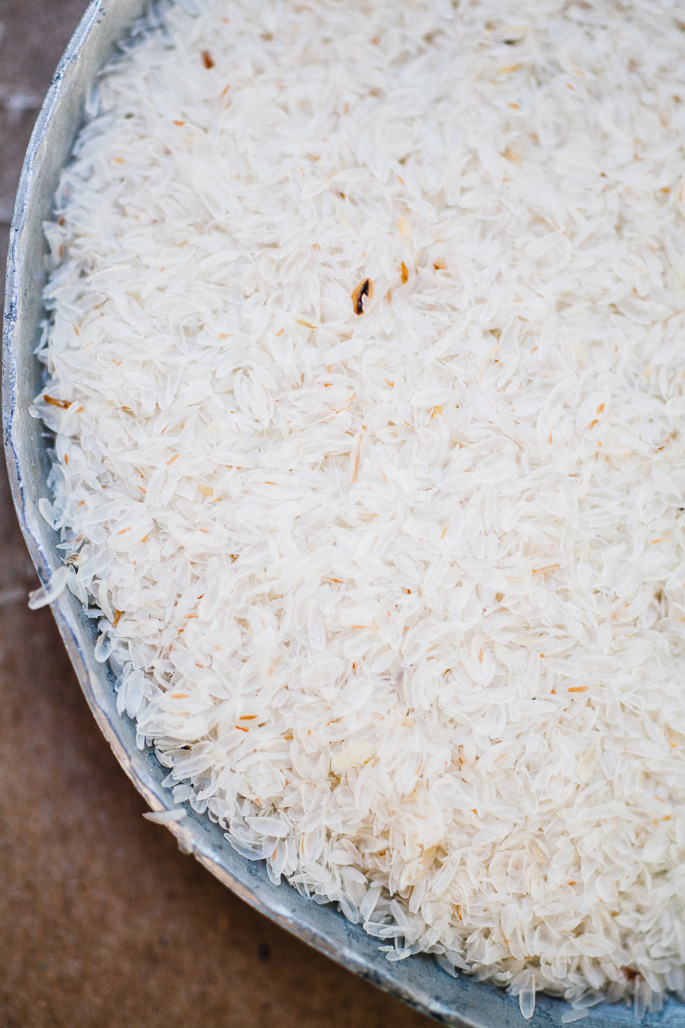 Psyllium is a seed that comes from Plantago ovata or Plantago psyllium. It's produced commercially mostly for use as a dietary fiber. Most commonly you'll see psyllium husk, as opposed to whole psyllium. The seed and seed husk are separated. It's the husk that retains the binding, mucilaginous properties that work so well both as dietary fiber and as a binder in baking. When combined with liquid, psyllium husk becomes mucilaginous and expands to 10 times its original size.
Psyllium is a seed that comes from Plantago ovata or Plantago psyllium. It's produced commercially mostly for use as a dietary fiber. Most commonly you'll see psyllium husk, as opposed to whole psyllium. The seed and seed husk are separated. It's the husk that retains the binding, mucilaginous properties that work so well both as dietary fiber and as a binder in baking. When combined with liquid, psyllium husk becomes mucilaginous and expands to 10 times its original size.
Psyllium's baking super powers: excellent pliability, gluten-like-structure, and undetectable flavor/color. With the help of psyllium, you can make cakes, cookies, and even free-form gluten-free breads (like this sourdough one from Baking Magique!). Psyllium provides the best flexibility while remaining completely flavorless & colorless. It's my binder of choice. Add a teaspoon of psyllium to the dry ingredients of any recipe to provide extra structure in both desserts and breads, regardless of if an egg is called for.
There are two ways to regularly use psyllium in your baking. You can make a psyllium "egg" as in the other recipes like this: combine 1 teaspoon psyllium with 3 tablespoons water. Stir together and set aside for 10-15 minutes until the mix is thick and gelatinous. Use to replace eggs as a binder in baked goods in a 1:1 ratio.
OR Instead of making an "egg" mix psyllium husk directly into your dry ingredients. Add 1 teaspoon of psyllium directly into your dry ingredients for every egg called for in your baked goods. When you add the wet ingredients, let the mix rest and moisten for 10-15 minutes (or longer). Then continue on with your process as usual.
You can buy psyllium at health food stores (usually in the "health" section with colon cleansers) and on Amazon. I like to use Organic India Whole Husk Psyllium 
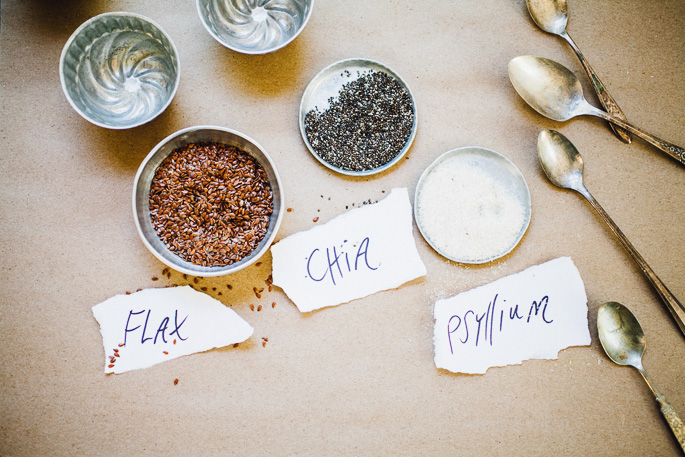

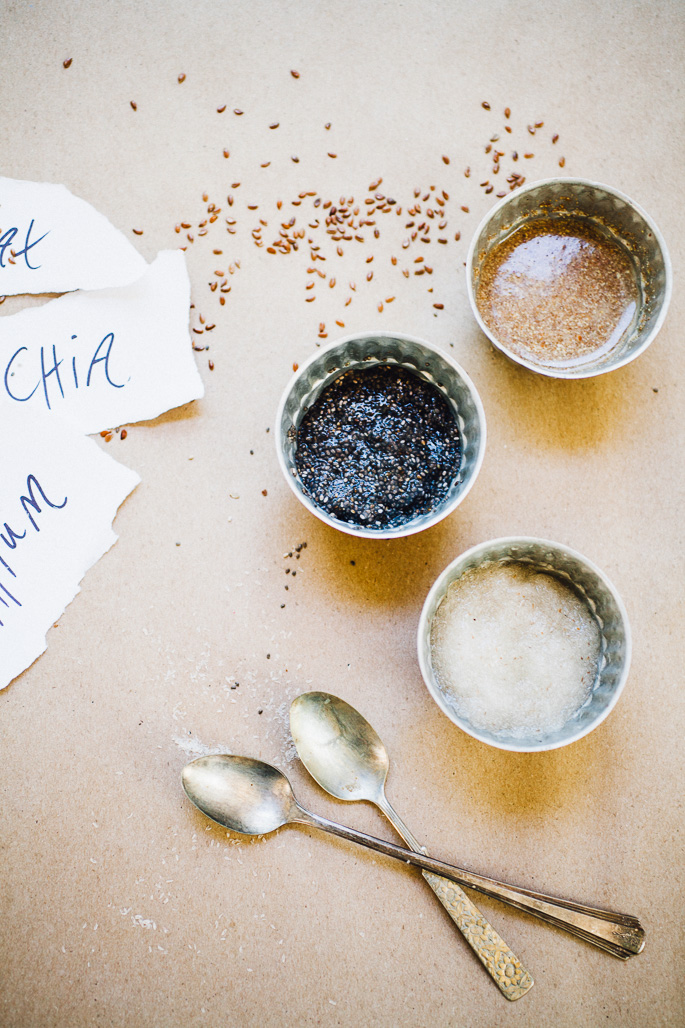 Final Thoughts & Tips
Final Thoughts & Tips
Even when a recipe doesn't call for egg and you don't need a "replacement" you can use chia, flax, or psyllium husk to improve the crumb and texture of your baked goods. When used in combination you get gluten free and vegan baking magic.
I often use one chia or flax egg along with 1 teaspoon of psyllium. This combination offers binding power, structure, moisture, and pliability. It's a win, all around.
Looking for some recipes to try out your new-found baking genius on? Try one of these:
Gluten Free & Vegan Cinnamon Rolls
Gluten Free & Vegan Chocolate Olive Oil Muffins
Big, Crisp, Chewy Gluten Free Chocolate Chip Cookies
Some of the links in this post are affiliate links. I may receive payment if you buy products through links on this page. I only ever recommend products I trust and use myself. Thank you for your continued support of Will Frolic for Food!

